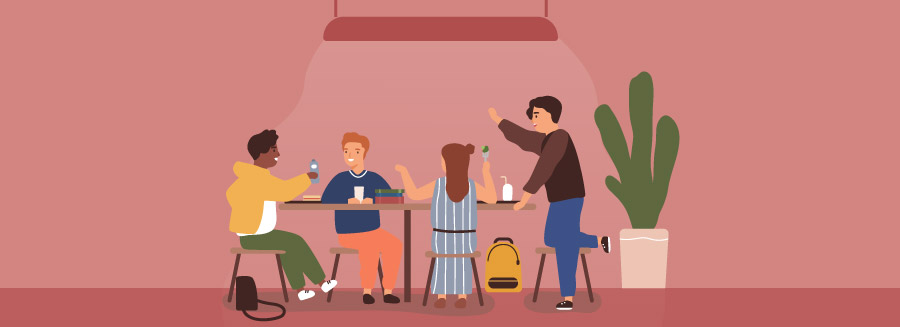When working with ELA and literacy educators to increase students’ engagement and achievement in reading, I often run into a set of common complaints. “I don’t have time with all the curriculum and standards I need to cover, to give kids time to read for fun.” “Kids don’t read for pleasure anymore, and if I give them time, they will just go on their phones.” “Kids fake read.” The list goes on. But when we reframe to discuss the benefits of being a reader, we quickly remind ourselves that we must prioritize it in our literacy classrooms. Why? “Because being a reader opens up our world.” “Reading gives us insight into what our loved ones are experiencing so we can better support them.” “Reading helps us become better humans.” And so much more. Fortunately, for many ELA and literacy educators across the country, self-selected reading is a standard. It can be part of our curriculum, and it is expected that we foster that habit within the students we teach.

When eighth graders in this study were learning with an ELA curriculum with the sole purpose of promoting engaged reading, data suggests it led to a flourishing of talk about books. Just listen to what eighth-grader Kelly said. “It’s a common thing at our lunch table to talk about the books we’re reading, ‘cause we all take them to lunch, even though we don’t read them at lunch. It’s just, they come around everywhere with us. . .it doesn’t even seem like nerdy. It’s just what’s been going on. We talk about the characters. . .and how it’s different than other books we’ve read.” Students were talking about what they were reading at home, in classes other than English, in the lunchroom, and with parents, peers, and teachers. This is what we want! For reading to be so authentic it bleeds into all aspects of our students’ lives.

Here are a few practical and authentic ways we can get kids to fall (back) in love with reading.
1 Give them books they will want to read! I had no idea what to put in my classroom library when I prioritized self-selected reading, so I asked my librarian. She introduced me to the classroom department of teachers and librarians at Mackin who generated a list of high-interest, young adult books (for free!). They also pointed me to publishers like Saddleback, Townsend Press, and Orca who would provide high-interest/low-readability texts. They included graphic novels, multiple genres, and books in verse. When you get new books delivered to your classroom, consider creating an “unboxing” video with your students.
2Confer with students. I found that I really didn’t need a lot of prompts and I could have better conversations with my students if I hadn’t yet read the book. I simply asked questions like,
- “What are you thinking about your book?”
- “Which character is most relatable to you?”
- “Any characters that you don’t like?”
- “What’s the main problem in this story?”
When students seemed to get stuck or were only giving me few-word answers, I simply said, “Tell me more.”

3 Create scarcity. In other words, don’t load up on the hottest reads so the books are so readily available. Anticipation is created when students must wait their turn to read the hottest book. It leads to authentic conversation and encouragement from peers to finish so the next in line can get the book.
4 Let them chat with each other about their books. Steven Layne offers conversation prompts I would copy and cut into slips and place in envelopes. Students would grab an envelope, move to a corner of the room with a few of their peers, and draw a prompt. It worked best when students were all reading different books because it gave students a chance to share with each other what they were reading, and the prompts scaffolded their conversation. One benefit that came from this was that students added books to their “Someday Read” lists.

My favorite part of helping students fall in love with reading was when students would convince me to read something they were reading. Young adult literature is not what I typically gravitate to when I self-select something to read. I would much prefer a good Jodi Picoult novel, a biography or memoir of someone I admire, or the latest practical education book. But when a student really “sold” me on a YA novel and I could talk with those who had read it, it was pure joy.
If you are interested in ideas for assessing independent reading without killing it, visit this previous blog post I wrote for some practical ideas.






